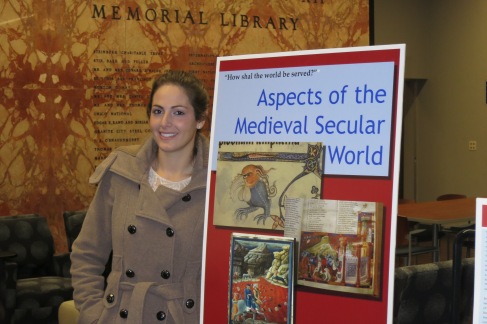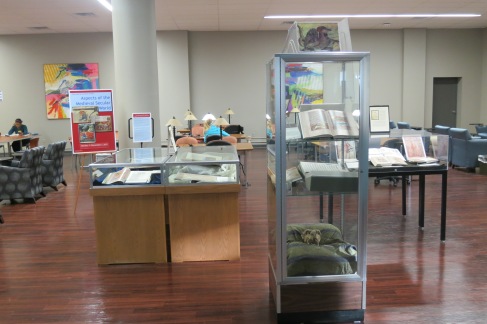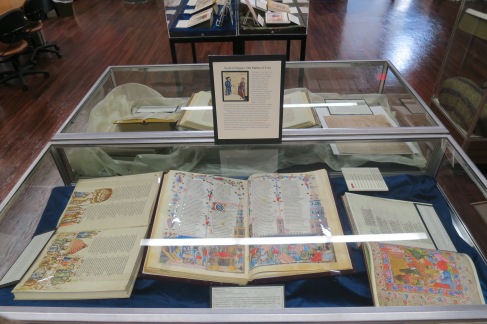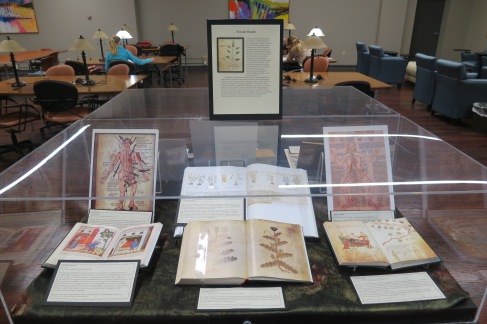Bernie Silver’s Cosmographia
Presented by: Anthony G. Cirilla
Key Background Texts: The Book of Genesis, Plato’s Timaeus, Aristotle’s De Caelo, Cicero’s Dream of Scipio, Virgil’s Aeneid, Plotinus’s Enneads, Macrobius’s Commentary on the Dream of Scipio, Claudian’s De raptu Proserpinae, Martianus Capella’s De Nuptiis Mercurii et Philologiae, Boethius’s Consolation of Philosophy
Influenced: Alan of Lille’s Plaint of Nature and Anticlaudianus, Jean de Meun’s Romance of the Rose, Chaucer’s Parliament of Fowles, the Plaints (Mars, Venus, Pitee, Fortune), Dante’s Commedia, C.S. Lewis’s Space Trilogy
Biography: c. 1085-1178. Said to have presented the Cosmographia to Pope Eugene III in 1147. Associated with the city of Tours, although part of his education may have been in Iberia. He also learned under Thierry of Chartres, a master of the trivium to whom the Cosmographia is dedicated. John of Salisbury appears to have been familiar with his work. He wrote an extensive allegorizing commentary on the first six books of the Aeneid, as well as the Mathematicus (a poem about math), and the Experimentarius (a poem about science).
Synopsis
Dedication to Thierry of Chartres (65): Bernardus calls Thierry a “doctor most renowned for true eminence in learning,” offering his work with entirely sincere protestations of humility.
Summary (65-66): Yes, I am summarizing the summary for you, that’s how nice I am. The first book, Megacosmos, is about how “Nature, as if in tears, makes complaint to Noys, or Divine Providence,” and Noys obliges by shaping matter into the universe. Everything in the known Neoplatonic universe gets a quick portrait. Then the second book is the Microcosmos, about how Noys send Nature on a mission to find Urania and Physis to make man.
Megacosmos (67-90)
Ch. 1 (67-9): In a highly rhetorical speech structured in the manner of a deliberative court argument, Nature argues that “bountiful Noys” ought to provide order to Silva/Hyle, insisting that it is not in keeping with God’s ethos to leave prime matter unshaped.
Ch. 2 (69-75): Noys is all like, Nature, you’re definitely my girl. Check it out – I am a personification of God’s knowledge. But “the nativity of creatures is celebrated in the divine mind; the effect which is secondary.” The plan you propose based on instincts was my plan, and now, “because you appeal at the proper time,” Make it so, Number One. (This is both a Star Trek reference and a HILARIOUS Platonic pun.) Hyle is out of control, but I’ll fix her up, and you’ll help. Nature is delighted. We are told that “Hyle was Nature’s most ancient manifestation.” We are told how Providence, using her sweet imagination, brings order to the contrary impulses within Hyle/Silva. How the four elements work and interact is discussed. Having brought “a median tendency from the imposition of law” upon matter, Noys takes a moment to congratulate herself (more of this latter). But concerned that the race of man won’t survive in the unstable world, Noys decides to fashion a world-soul, “the fountain of light,” in whom “are the images of unfailing life, the eternal likeness, the intelligible universe, sure knowledge of things to come.” And so Endelechia, the World Soul and child of Noys, is married to Silva’s offspring, the Universe. Endelechia prefers the heavenly regions to the earthly ones though… Marriage isn’t easy, you know.
Ch. 3 (75-86): Now for some plenitude principle – basically, any imaginable sphere of existence has something that dwells there. So you’ve got the Cherub, Seraphim, Thrones, Powers, Principalities, Dominions, Virtues, Archangels and Angels. Then you have the stars, their constellations and the influence they have over the fate of humanity. Then there’s the seven planets and their functions. Various rivers, seas, and mountains are described, as well as animals and the seasons. Certain lands have favor from Nature, and just as Endelechia is the soul of the world, so there is a sub-soul for various lands (83). Description of plants, fish, and birds conclude the section.
Ch. 4 (86-90): Doctrine of celestial influence and everything in its place. Relationship of fire and earth. Eternality of universe due to its perfection in creation. The universe depicts the perfect will of God. Relationship of Hyle to the cosmos reiterated. “Thus from the life of the divine mind, from the spirit of Silva, from the world soul, from the growth-principle of created life, the eternity of the universe has its rise” (88). Intelligent design, but way prettier rhetoric than your street corner creationists’. Fascinating discussion of time. Intellectual universe, then sensible universe. “Setting out from eternity, time returns again to the bosom of eternity, wearied by its long journey” (89). Bernardian time travel? Nietzsche’s Cosmic Dancer much? Time and eternity mirrors of each other. Noys is ‘pregnant of the divine will,’ giving to Endelechia “the images she conceives of the eternal patterns,” who ‘impresses them upon Nature,” who “imparts to Imarmene what the well-being of the universe demands.” Endelechia supplies souls, Nature the bodies for the souls, and Imarmene the “temporal continuity” in which those beings live.
Microcosmos (91-127)
Ch. 1 (91-3): Noys summons Natura and bids her to check out her sweet labors, which she has ‘endowed” with ‘their reforged essences with the splendor that befits them.” More firmament stuff. Motions of the planets. Celebration of the sublunary realm.
Ch. 2 (93-4): Silva is one hot cosmic matter.
Ch. 3 (94-7): Some day Noys might stop talking. Since making humanity is especially difficult, Noys bids Natura to seek out Urania and Physis. She decides to seek out Urania first. She visits Anastros, but Urania isn’t there. Now she explores the “five parallel bands set between the poles of the firmament” (95). Then she travels the Milky Way “like a highway,” She sees souls destined to be mortal, weeping over their earthly fates. But Urania is nowhere in the Zodiac, so she visits Aplanon, “highest and outermost limit of the firmament.” Apparently the universe is a Bruce Willis movie. Here in the realm of the fifth element se finds Genius/Usiarch/Pantomorphos/Omniformis, who is very shapely. Genius greets her and turns her gaze to Urania, who is star-gaizing, and Urania gets down to business immediately.
Ch. 4 (97-8): Urania recognizes Nature as coming as vicar of God and Providence’s desire for harmony. Urania notes their relationship as “sisters” born of Noys. She is reluctant, but concedes to the task because man is made from archetypal patterns. She claims the minor duty of guiding the human soul. Urania agrees to follow Natura.
Ch. 5 (98-104): Impressed, Natura goes with Urania to hang out for a beat with the “supreme and super-essential God.” Discussion of the ranks of the spirits. Tugaton, home of divine awesomesauce. They pray to the Trinity. They pass from the ethereal firmament to the realm of the planets. Here they meet the Usiarch of Saturn, whom Natura encounters in terms of his earthly impact (which is negative). T hen they pass through the realm of Jove, from which comes pleasant influence, and where lives Clotho, a human-centered version of Imarmene. Then they pass through the belligerent sphere of Mars, and come to the Helin highway, with its four seasonal influences. Sun as both warrior and poet, daughters Psyche and Swiftness. Urania loves the sphere of the sun, but suggests they stop by Lucifer and then move on to Mercury and Venus. Mercury’s influence is to heighten the influence of whatever sphere he is closest to. Magisterial Venus and her benevolent role. Moon mediating between the ether and the atmosphere. The moon is the lowest of the spheres, but transmits “Aethericon,” the “essence of bodily growth,” to the lower world. Ptolemy calls her the planet of the sun because her light is borrowed. Lucina/Huntress/Hecate.
Ch. 6 (104-5): Summary of the impressive sights just seen.
Ch. 7 (105-8): Natura sees a throng of spirits hanging out in the translunary sphere. Urania gives a lecture. 4-fold spheres: firmament, ether, atmosphere, earth. Each of these realms “has its spiritual realm, each has its angels.” God occupies the highest sphere, man the lowest. Angels and more badasser angels. The lower down the ladder, the lesser the angel. Each person granted such a being as a guardian angel. Moar higher archy: first class of awesome sublunary spirits, second class which is benevolent, third which are evil: guardians, intermediary spirits, and renegade angels. AND FAIRIES!!!!!!! YAY!!!!!! And Summanus, Lord of Deathly Deadly Death and Dying Dead. So there you go.
Ch. 8 (109-10): So here’s what Natura has learned. Don’t be freaked out by death. Be all philosophical and stuff.
Ch. 9 (110-12): Urania is freaked out by sublunary disorder. They come to Granusion, a secretive earthly paradise. Physis is there with her daughters Theory and Practice, mediating between the elements and animal life. Physis was thinking about Nature and humanity in “a highly imaginary way,” Theory notices the guests and they are all like OMG OMG OMG HAIIII. Then Noys interrupts for more speechifying.
Ch. 10 (113-4): Noys is going to create humanity to finish the chain of being, because humans are an intermediary of earthly and divine things. His job on earth is to know stuff, and after death he’ll join us in heaven.
Ch. 11 (114-7): Your mission, which you are choosing to accept, is to form a soul from Endelechia (for Urania), a body from matter (for Physis), and unite the two through the powers of the cosmos (for Natura). To help with these tasks, Urania is given the Mirror of Providence, Natura the Table of Destiny, and Physis, the Book of Memory. The Mirror has the forms, the has the progression of time, and the book of memory is the intellectual organization of the sensible world. “Amid so great a host of earthly natures Physis discovered only by great effort the image of man, faintly inscribed at the very end of the final page” (117).
Ch. 12 (117-8): They set to work, but Physis is frustrated by the malignity made possible by Silva.
Ch. 13 (118-122): The principles of life, unity and diversity, are used by Physis. Struggle to master the fluctuations of Silva, uniqueness of human nature. The humors, the meaning of the arrangement of the body, which is an image of the cosmos. The heavenly brain made soft so that it can learn stuff. Functions of the soul mirrored in construction of the brain: imagination, memory, and reason. Sensory perception.
Ch. 14 (123-7): Discussion of the learning faculties of man: the exalted nature of sight, inferior but indispensable hearing, tongue essential for the Arts but prone to evil and ability to taste, and smell which “both undermines and stimulates the work of the brain.” Sluggishness of touch. Dignity of the heart. Elemental components: heart is fiery, brain is wet, blood is airy, liver is earthly. The genitals are in a war against death of the race. Weakness of the body. Physis bestows the limbs, a sign of our sublunary nature.
Discussion Questions:
- What exactly is the role and purpose of personification in this text? Why is Noys always doing what she is asking her personifications to do?
- What exactly is this text? Literary? Philosophical? Scientific? Surely a mixture – but how do these fit together?
- Why didn’t Bernie Silver write more about the fairies????





